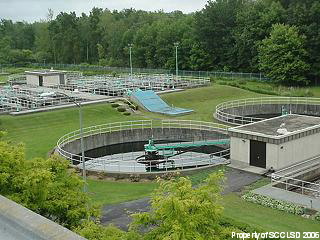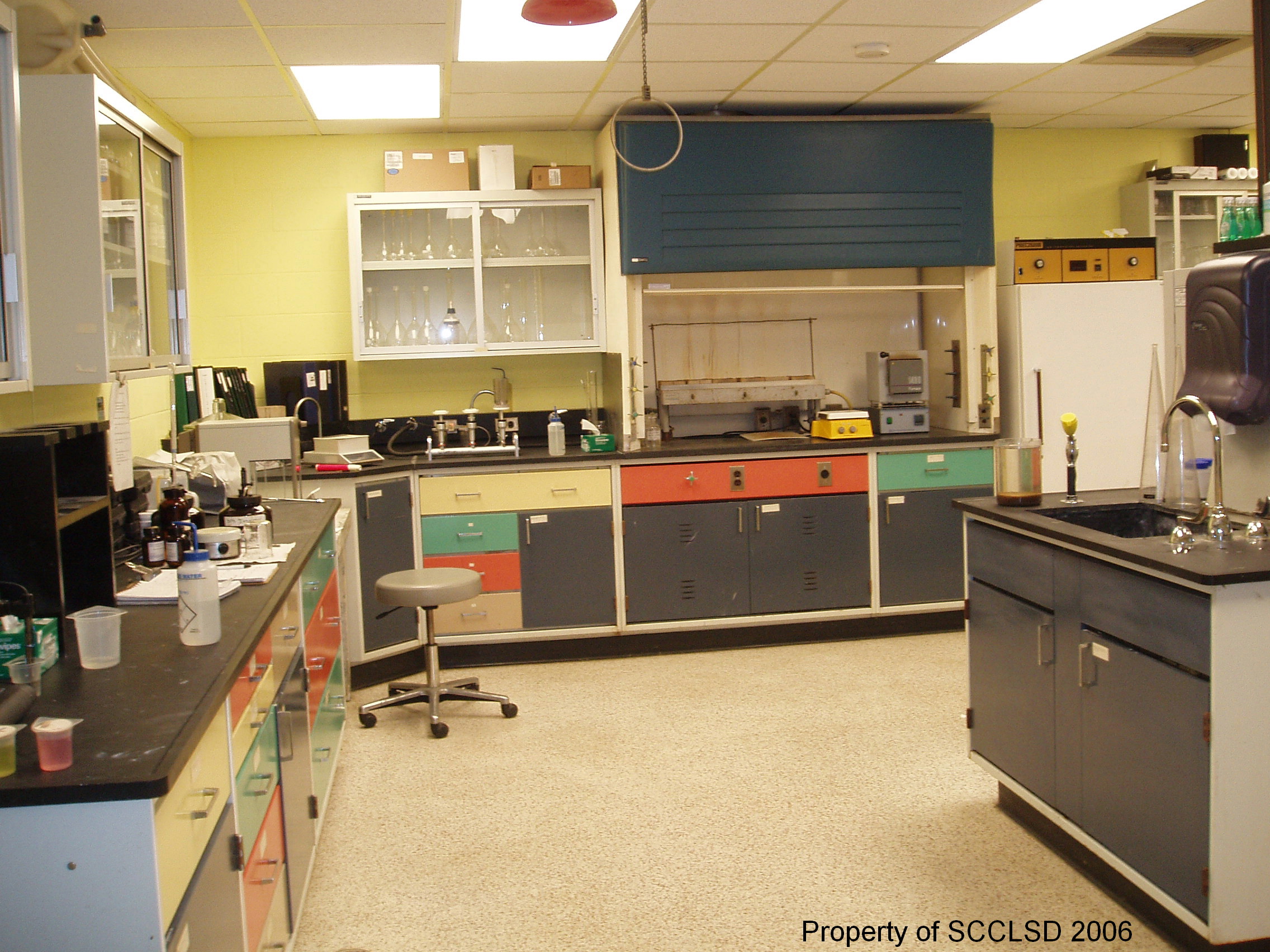
TREATMENT PLANT TOUR

Upon entering the treatment plant you will see a large grassy area with many in-ground tanks of various sizes. On most days you will notice there is no awful smell! The grass is mowed and there are flowers blooming in the summer. An important part of running an efficient plant is cleanliness and neatness.
The workers at a treatment plant are trained and licensed by the State as Wastewater Treatment Plant Operators and must receive ongoing training to maintain their licenses. They must demonstrate adequate years of on the job training, pass courses designed to test their knowledge of the treatment process including its chemistry and biology, understand and be able to operate the equipment involved in running a plant, and be fully aware of health and safety issues, and, finally, pass a state exam. SCCLSD has 3 licensed Operators and 1 licensed Chief Operator keeping this plant running safely and efficiently, and according to state permit guidelines 24 hours a day, every day of the year. They are dedicated workers who genuinely realize the importance of their work and its impact on our environment.
Another type of permitting is the Plant's NPDES permit, or license to operate. NPDES stands for National Pollutant Discharge Elimination Permit. NPDES permits are required by the Federal Water Pollution Control Act Amendments of 1972 with the intent of making the Nation's waters suitable for swimming and for fish and wildlife. The permits regulate discharges into navigable waters from all point sources of pollution, including industries, municipal wastewater treatment plants, sanitary landfills, large agricultural feed lots and return irrigation flows. There are approximately 60,000 permits in force across this country. Of that total, approximately 15,000 are held by municipal treatment plants. The authority for issuing these permits comes from federal law. New York State exercises this authority directly. The main concern of the Treatment Plant Operator is meeting the effluent (discharge) limits specified in the NPDES permit. The permit specifies the monthly average and maximum levels of settleable solids,, suspended solids, biochemical oxygen demand, the number of bacteria, temperature, flow, pH of the discharge and the amount of oxygen demand.
The operation of the complex plant processes requires monitoring and testing on a continuous basis. The Plant maintains a Laboratory for testing the quality of the water as it passes through each plant process and the sludge quality. Laboratory data is also used to assure compliance with the stringent regulatory requirements of the NPDES Permit. The South & Center laboratory is inspected and licensed by the New York State Department of Health and also is a certified member of the National Environmental Laboratory Accreditation Program meeting their certification standards on an annual basis.

Tests run on-site include Biological Oxygen Demand, Carbonaceous
Oxygen Demand, Suspended and Settleable Solids, pH and Temperature, Dissolved
Oxygen Demand, Total Kjeldahl Nitrogen, Residual Chlorine, and Fecal Coliform.
Other parameters may be tested on an as-needed basis. We are proud of our ability
to provide this testing on-site for the best management of our treatment plant
and quick response for environmental purposes.